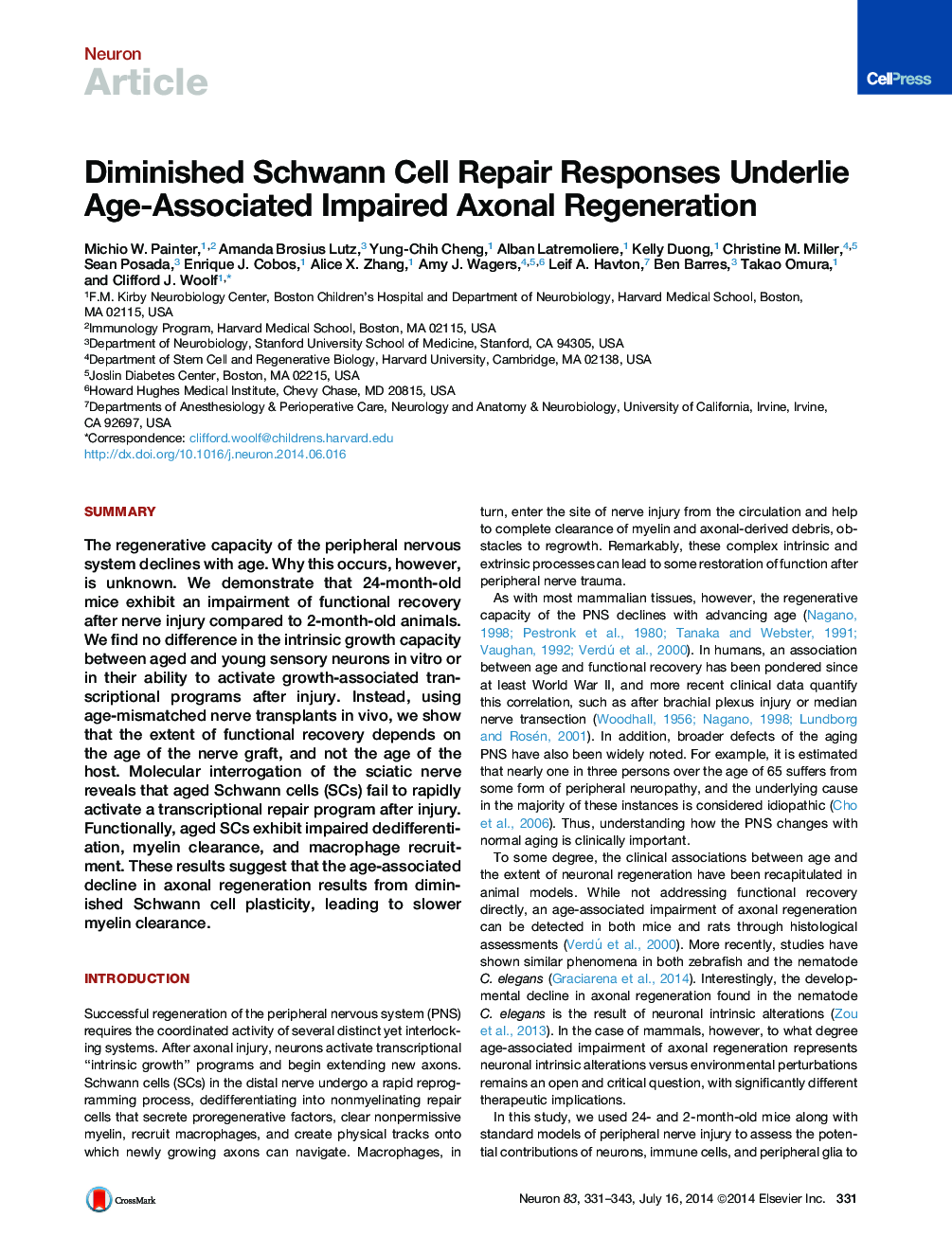| Article ID | Journal | Published Year | Pages | File Type |
|---|---|---|---|---|
| 4321031 | Neuron | 2014 | 13 Pages |
•Aged mice exhibit diminished functional recovery after nerve injury•Aged neuronal regeneration responses remain robust•Transplantation of young nerve grafts into old hosts rejuvenates regeneration•Aged Schwann cells exhibit diminished capacity for myelin clearance
SummaryThe regenerative capacity of the peripheral nervous system declines with age. Why this occurs, however, is unknown. We demonstrate that 24-month-old mice exhibit an impairment of functional recovery after nerve injury compared to 2-month-old animals. We find no difference in the intrinsic growth capacity between aged and young sensory neurons in vitro or in their ability to activate growth-associated transcriptional programs after injury. Instead, using age-mismatched nerve transplants in vivo, we show that the extent of functional recovery depends on the age of the nerve graft, and not the age of the host. Molecular interrogation of the sciatic nerve reveals that aged Schwann cells (SCs) fail to rapidly activate a transcriptional repair program after injury. Functionally, aged SCs exhibit impaired dedifferentiation, myelin clearance, and macrophage recruitment. These results suggest that the age-associated decline in axonal regeneration results from diminished Schwann cell plasticity, leading to slower myelin clearance.
